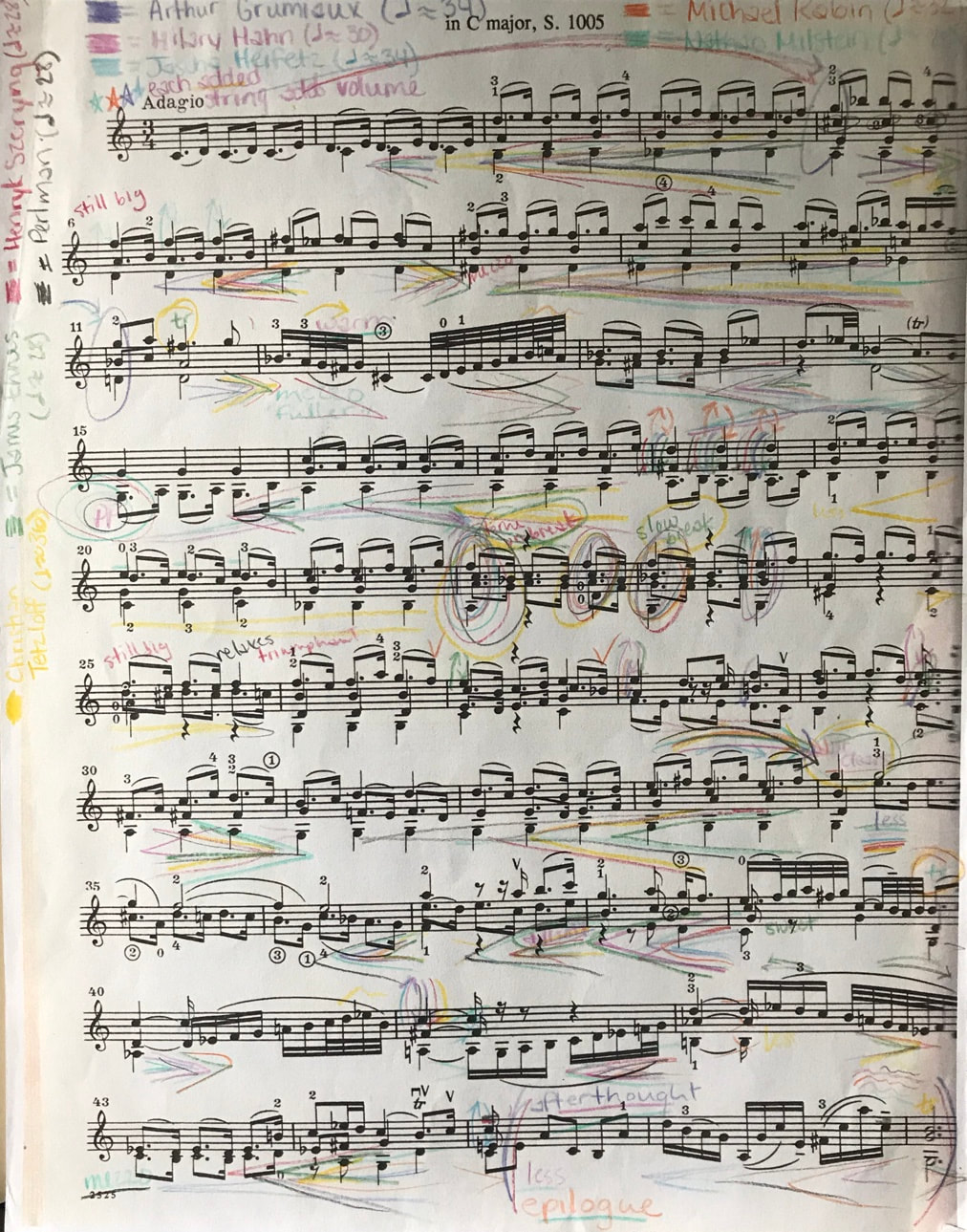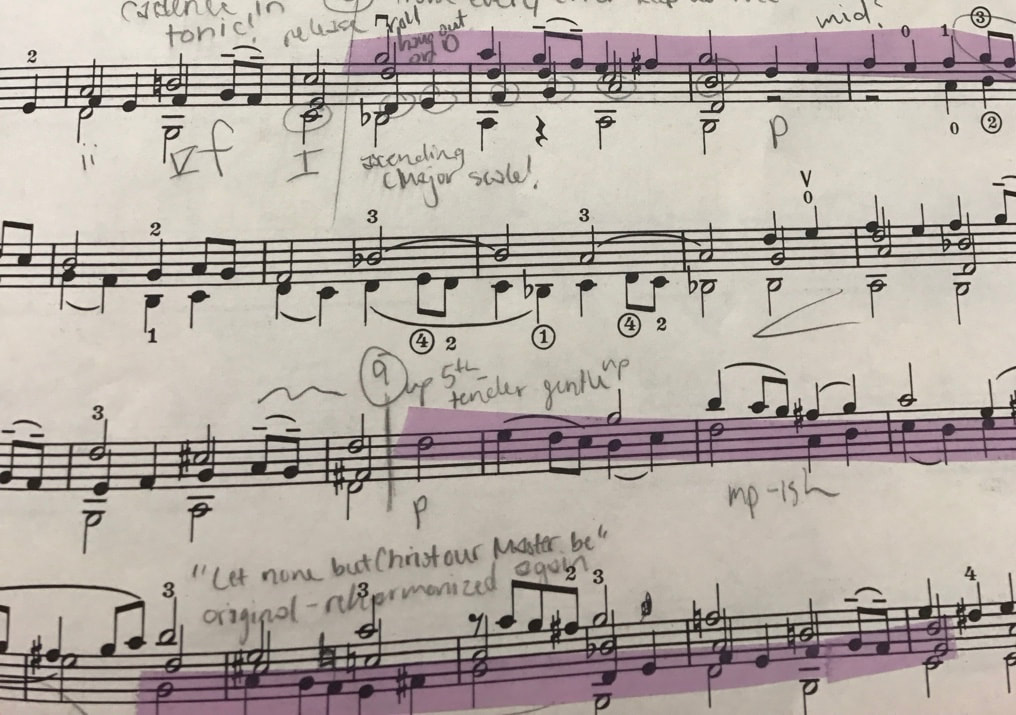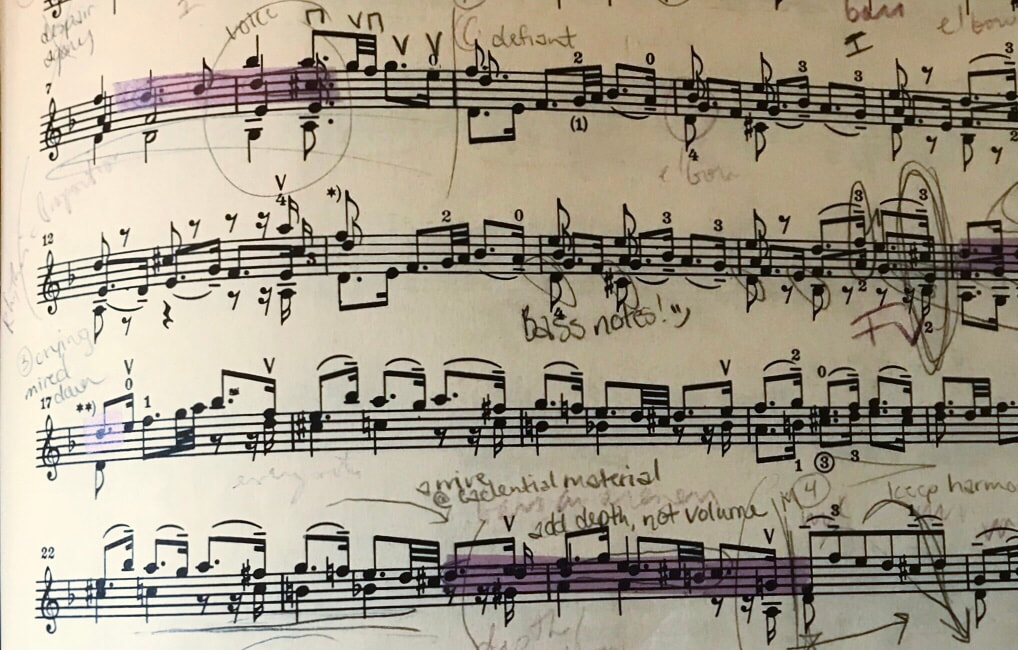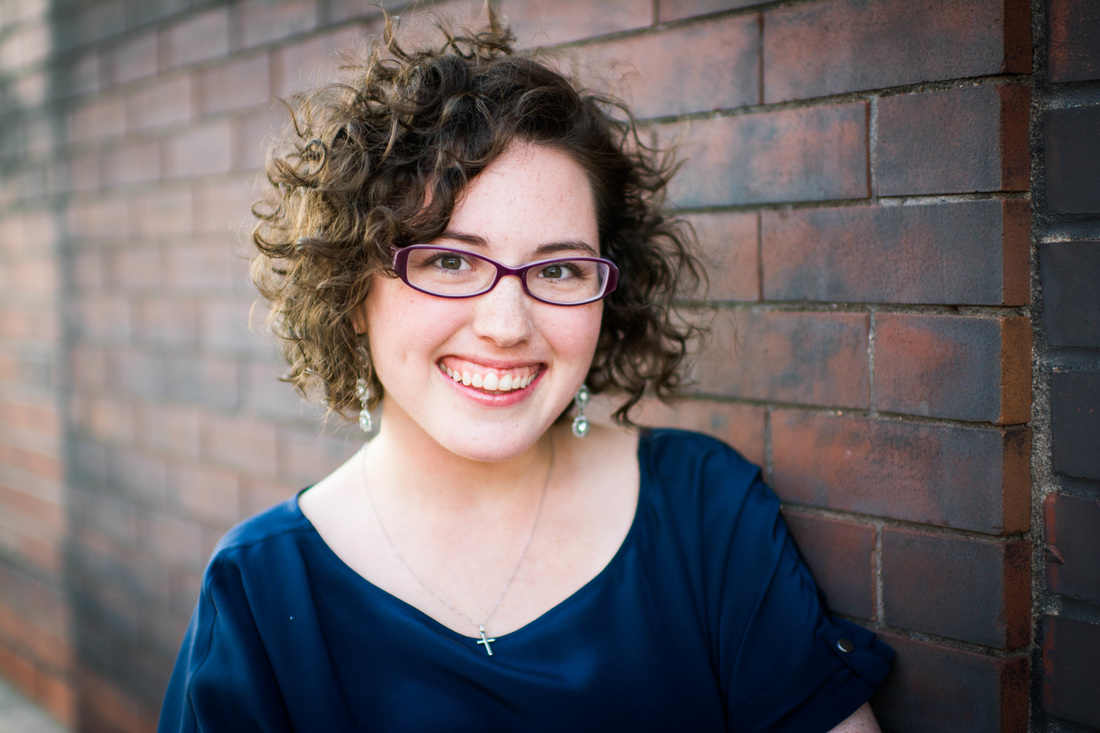One of my favorite ways to provide a visual reminder for what I’d like to prioritize is using highlighter tape. When I was younger, I used it to mark difficult passages that needed more attention in my practice. I loved it because, when I felt like I had sufficiently addressed any issues, the tape was removable and I could clear my score without damaging it! I also found that I could write on it in pencil so it didn’t hinder my usage of the score in any way. As I began studying my first solo Bach fugue, I used the tape to highlight the fugue subject or fragments of it. By drawing my attention to it visually, I was able to prioritize bringing it to the foreground of the texture when it was buried within chords (hey look, I’m talking about voicing again in solo Bach…go figure!). More recently, I’ve been using it while re-visiting the Chaconne from the d minor partita. The treatment D-C#-D motion in cadential progressions is fascinating to me and often the most interesting voice to my taste. The pitch I most associated with consonance and release reaches the height of tension in these progressions such that the leading tone is heard as relief to it. So, to make sure I draw the ear toward this progression throughout the piece, I’ve marked them all with highlighter tape so I know what I want to bring to the foreground. It’s all too easy to become overly cerebral with these exercises and get so caught up in the detail that the musicality becomes lost. However, I’ve found that by looking this closely at the score away from my instrument, I’m left with a clearer understanding of the musical inflection I want to craft. Side note: I need to give a huge shoutout to the Parker Quartet for talking about “inflecting” phrases during their masterclass for the University of Iowa String Quartet Residency Program on Monday- I’ve been mulling over how perfect that term is for what we do ever since then and I’m so grateful for the inspiration. By focusing on these details, I’m often led to larger-scale musical questions. Here are some examples: 1. How does the register of the fugue subject and the key area its in influence the character? 2. In what ways do the qualities I associate with the strings of my particular violin inflect the general character of a passage? 3. How does the texture of a particular passage influence my dynamic level? My answers to these and other questions directly guide my inflections on a piece. When I approach the piece with my violin again after taking the time to study it in one (or more) of these ways, my inflection on the piece is much more clear. Rather than fighting the score, I’m working with it for a more nuanced performance. What are some ways studying scores has benefited your practice? What are some techniques you use? Composers, do you leave any “easter eggs” in your music for discerning performers to find, or are they subconsciously placed? Please share in the comments section!
0 Comments
I mentioned in my last blog post that I wanted to share my experiences and observations about my repertoire for my upcoming unaccompanied violin recital. This post will focus on the piece that I have already been working on for some time: Bach’s g minor solo sonata.
My history with this piece began about seven years ago. I first learned the outer movements for my undergraduate college auditions and then filled in the inner two movements during the sophomore year of my undergrad. I remember my teacher in high school once making a comment to the effect that my Bach would become better when I was older and had more life experience. My seventeen-year-old self looked forward to the day when I would get to study that sonata again and understand it with more clarity and play it with more depth. Last May, I got the opportunity to study the entire sonata again in preparation for my degree recital. Ever since I started learning the solo Bach repertoire, I have loved playing it. This music, to me, is so satisfying- emotionally, mentally, and spiritually. When one plays this repertoire, it is incredibly important that the player takes the time to examine Bach’s life and passions because they influence our understanding of these pieces. We need to know who he was, what he did, and what he loved because these things provide clarity and inform the musical direction of the pieces. Adding these details to our understanding of how this music was played in the 18th century allows the performer to craft really compelling performances. As a performer, I take all of this knowledge and then filter it through my own life experiences. I ask myself how I can relate to what Bach expressed through his music, what emotions I feel, and then play those emotions. My goal in playing music is to find ways to relate to people, whether that is the relationship between myself and the composer, myself and the music, or myself and the audience (or all of those relationships at once!). This requires a lot of vulnerability from the performer and a willingness to be emotionally exposed. I’m constantly seeking to be more comfortable with the discomfort that comes from feeling so exposed. In the Bach solo sonata, this vulnerability is heightened because the performer is alone on stage. As I present Bach’s g minor sonata on this program, I will be focusing on conveying a greater emotional intimacy with each performance. |
Archives
November 2018
Categories
All
|




 RSS Feed
RSS Feed